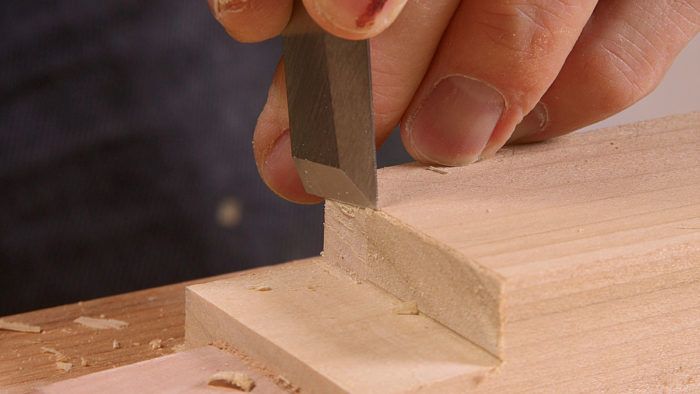Skill Building Hand-Tool Exercises
Practice, and you'll gain better control over your hand tools.

Synopsis: To firmly master the use of hand tools such as the handsaw, chisel, and handplane, you need to practice. Practice builds and reinforces your muscle memory, letting you perform the physical tasks routinely and making them second nature. Practice also lets you build up mastery of the underlying skills by isolating them, or reducing them to basic elements of technique. Jeff Miller, who is a musician as well as a woodworking teacher, knows the value of practice. Here, he shows the basic exercises you can do regularly to keep your skills in top form.
Before I made furniture for a living, I made music. As a player in orchestras and brass ensembles, I stayed sharp in the way that most performers do, with hours and hours of practice.
So when I came into the woodshop, it seemed natural to practice my new skills with the same sort of discipline. Imagine my surprise when I found that practice is shunned by most woodworkers as much as it is embraced by musicians. But it’s just as important.
Practice turns the tool into an extension of yourself. It builds and reinforces your muscle memory, letting you perform the physical tasks routinely and making them second nature. And that’s key, because there’s always more than just the physical task. You don’t just saw or chisel—you need to do that to a line. Practicing lets you build up mastery of the underlying skills by isolating them— reducing them to basic elements of technique.
The exercises shown here will help. Work on them for 15 minutes a couple of times a week and your mastery and confidence will grow. Will it make you perfect? Nope. But it certainly will make you a better craftsman.
Saw skills: With proper technique, using any handsaw—western or Japanese—is a joy. The saw cuts easily, without binding, and follows a line without being steered. These exercises will help. Start with the right stance, with your forearm perfectly aligned with the back of the saw. To do this, stand slightly off to the side, with your hips at about 45° to the work. Your feet should be at least shoulder-width apart.
Clamp a 1 ⁄ 2-in.- to 3 ⁄ 4-in.-thick board upright in a vise, with 5 in. or so above the jaws. Practice sawing into the end grain with your eyes closed. This lets you concentrate on your mechanics, instead of watching the kerf. Make your grip light, as if you’re holding a baby bird, and point your index finger forward along the blade. Try to generate all of the saw’s movement from your shoulder. With the cut underway, close your eyes and notice how the saw’s action feels. How much pressure is needed in each direction for a smooth cut? Also listen to the sound of the saw as you cut. Strive for a very even sound throughout the stroke. A little of this practice goes a long way.
For the full article, download the PDF below.
Fine Woodworking Recommended Products

Stanley Powerlock 16-ft. tape measure

Olfa Knife

Bahco 6-Inch Card Scraper










Log in or create an account to post a comment.
Sign up Log in